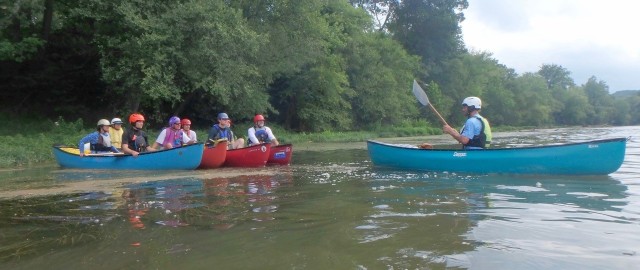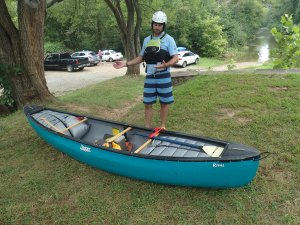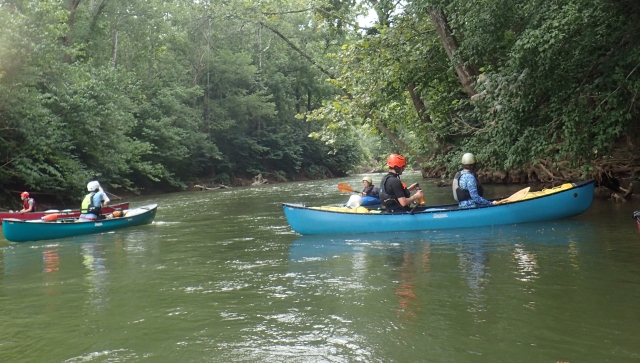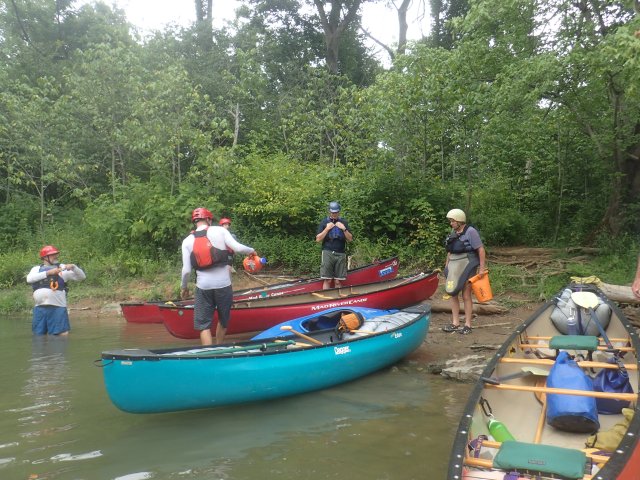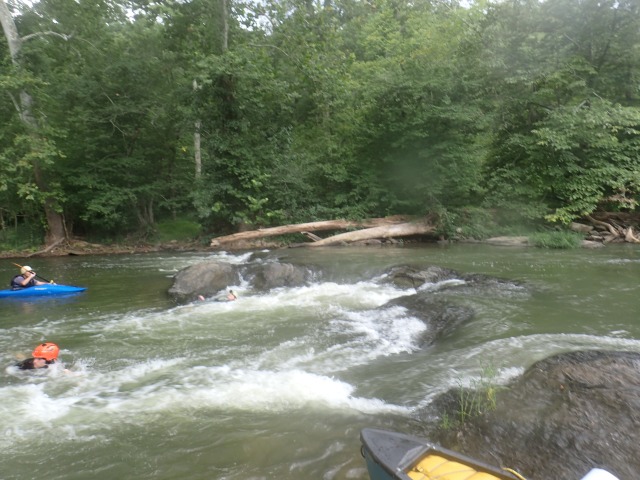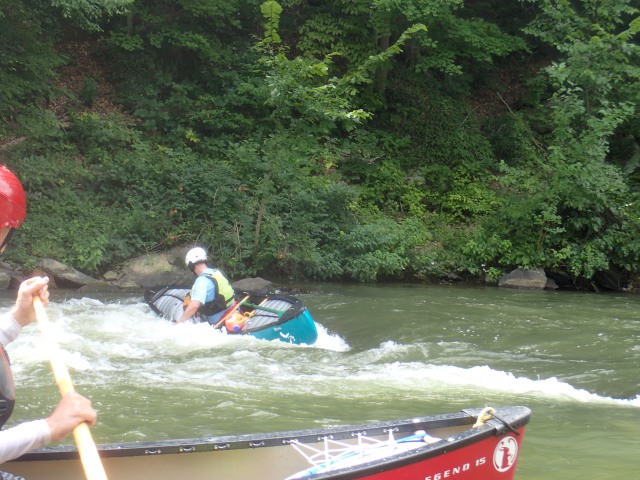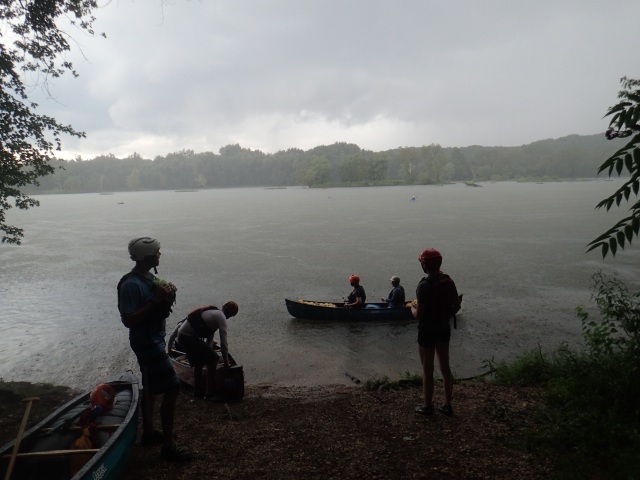After you have learned how to paddle flat water, for some the next step is to learn how to paddle whitewater. Others are not interested in whitewater, which is fine too.
The first course I took with the CCA (Canoe Cruisers Association) was a tandem whitewater course many many years ago with a former boyfriend. Although I have spent most of the whitewater paddling in a kayak, I started in a canoe and have flirted with canoeing over the years. I’ve always wanted to be at least an acceptable canoeist.
The second time I took the whitewater canoe class was in a solo canoe; the third time I took it was with my husband and our newly purchased tandem canoe (about 13 years ago) and then my husband and I took it again, since we haven’t done much whitewater paddling since we adopted our child. And neither of us is really good in a whitewater canoe. We have a lot to learn.
Brendan Fitzpatrick was our ACA (American Canoe Association) CCA instructor and Barb Brown was our safety boater. There were eight students in four boats. Brendan was in a solo whitewater canoe and Barb was in a whitewater kayak. Some of the students had been whitewater paddling before but took it to increase our skills. Some students were new to whitewater paddling. At least one is a whitewater kayaker branching out to learn new skills in a canoe vs. a kayak.
To qualify to take this class, you have to already have completed the flat water canoeing class which was offered earlier this summer or have those skills. And of course you need to be a competent swimmer.
Not all of the students owned boats. Brendan supplied a couple of boats for students to use. This was a six hour, one-day course. So Brendan could not cover everything you need to know in one day. When I first took the CCA whitewater course, a lifetime ago, it was a 3.5 day course. A Friday evening, all day the first Saturday. Then the next weekend it was all day Saturday and on Sunday there was an all day trip to a different river.
Brendan covered equipment, safety, parts of the boat, the basic strokes. Then on the river we worked on low and high braces. We changed places in the boat several times throughout the day. So the bow paddler (front) paddled in the stern (back) and vice versa.
In the water we practiced mainly eddy turns, ferrying and peeling out. The paddle strokes used in these skills are: pry, draw, cross-bow draw, sweep and forward stroke.
These skills are also used in whitewater kayaking, but I can attest that it is more difficult to do these skills in a tandem whitewater canoe. In a kayak, you don’t have anyone to communicate with and you paddle from the fulcrum (pivot point) of the kayak. In a tandem canoe, the fulcrum is still the middle of the boat, but you are sitting either in front of or behind the fulcrum and what stroke you do depends on what position you are sitting in.
One thing that we couldn’t get into in a one-day course was river reading. If you are interested in whitewater canoeing and you might be interested in taking a week-long course in it. Madawaska Kanu Centre, in Barry’s Bay, Ontario, Canada is one place where you can take a 5-day course in whitewater canoeing. There are many places you can take a multi-day course in kayaking, but canoe instruction is harder to find. I took a 5-day course in whitewater kayaking many years ago at Madawaska and since we paid in Canadian Dollars, that year everything was 30% off! Even earlier in my kayaking career, I took a whitewater kayak course at Nantahala Outdoor Center in Bryson City, NC.
Everything I have learned about whitewater canoeing, I’ve learned from CCA or MCC (Monocacy Canoe Club) classes locally. But river reading and safety skills translate from kayaking to canoeing.
One thing that is essential if you plan to practice whitewater boating is taking a swiftwater rescue course and a first aid course. I think I’ve taken a swiftwater rescue course three times in my life, and it is probably time to take one again. I know both CCA and MCC offer swiftwater rescue courses every year. And First Aid and CPR training is available from the Red Cross, year round.

